Hua Shao
AlphaZero Gomoku
Sep 04, 2023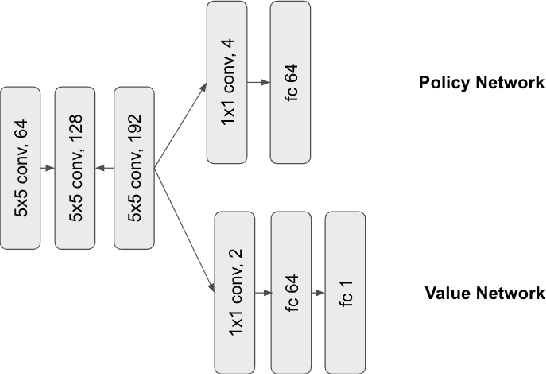
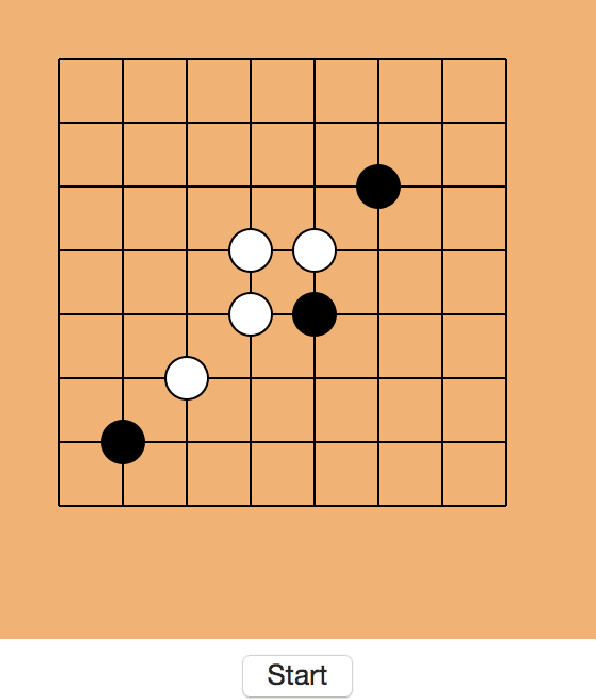
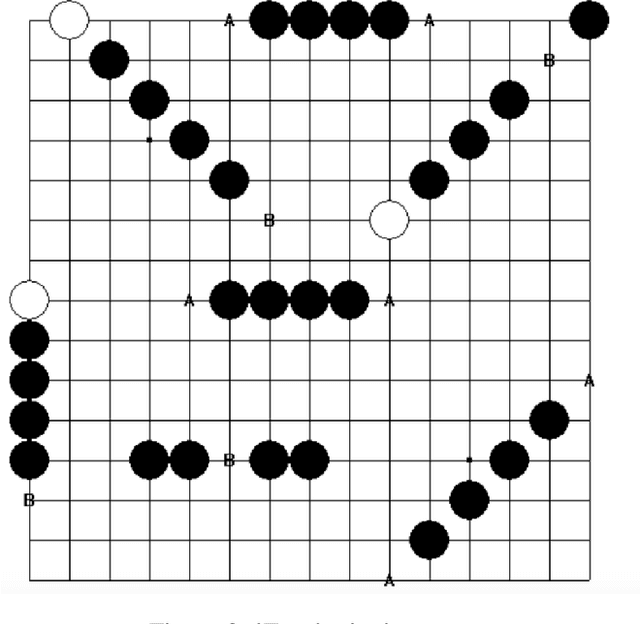
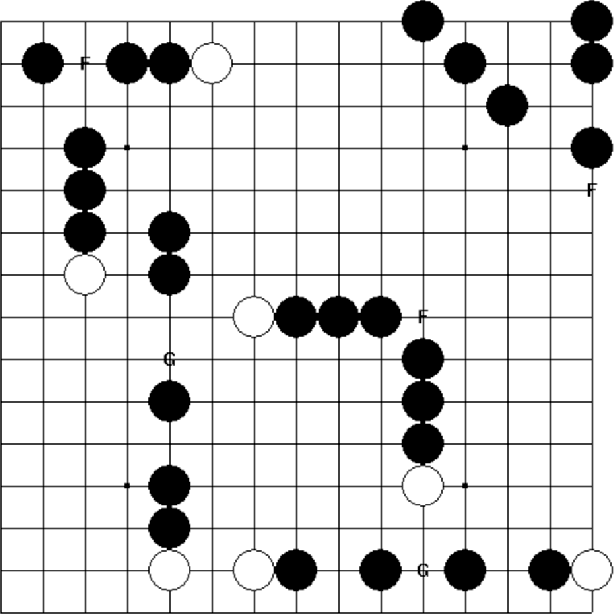
Abstract:In the past few years, AlphaZero's exceptional capability in mastering intricate board games has garnered considerable interest. Initially designed for the game of Go, this revolutionary algorithm merges deep learning techniques with the Monte Carlo tree search (MCTS) to surpass earlier top-tier methods. In our study, we broaden the use of AlphaZero to Gomoku, an age-old tactical board game also referred to as "Five in a Row." Intriguingly, Gomoku has innate challenges due to a bias towards the initial player, who has a theoretical advantage. To add value, we strive for a balanced game-play. Our tests demonstrate AlphaZero's versatility in adapting to games other than Go. MCTS has become a predominant algorithm for decision processes in intricate scenarios, especially board games. MCTS creates a search tree by examining potential future actions and uses random sampling to predict possible results. By leveraging the best of both worlds, the AlphaZero technique fuses deep learning from Reinforcement Learning with the balancing act of MCTS, establishing a fresh standard in game-playing AI. Its triumph is notably evident in board games such as Go, chess, and shogi.
DeepMA: End-to-end Deep Multiple Access for Wireless Image Transmission in Semantic Communication
Mar 21, 2023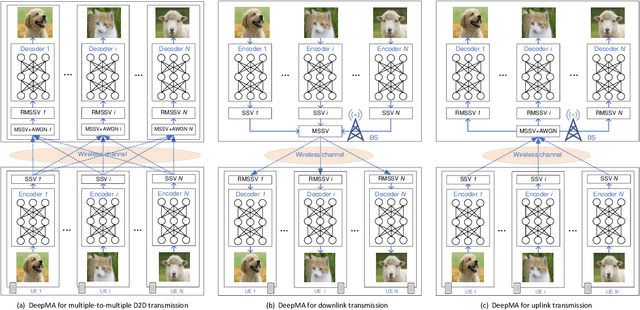


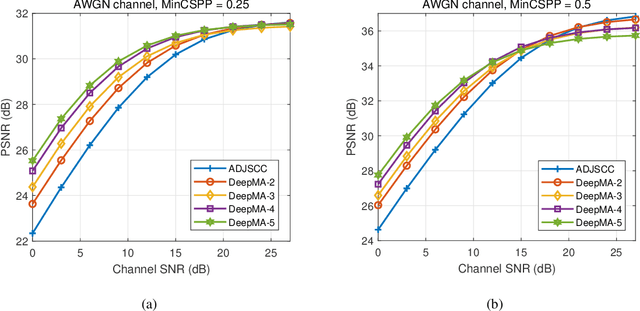
Abstract:Semantic communication is a new paradigm that exploits deep learning models to enable end-to-end communications processes, and recent studies have shown that it can achieve better noise resiliency compared with traditional communication schemes in a low signal-to-noise (SNR) regime. To achieve multiple access in semantic communication, we propose a deep learning-based multiple access (DeepMA) method by training semantic communication models with the abilities of joint source-channel coding (JSCC) and orthogonal signal modulation. DeepMA is achieved by a DeepMA network (DMANet), which is comprised of several independent encoder-decoder pairs (EDPs), and the DeepMA encoders can encode the input data as mutually orthogonal semantic symbol vectors (SSVs) such that the DeepMA decoders can recover their own target data from a received mixed SSV (MSSV) superposed by multiple SSV components transmitted from different encoders. We describe frameworks of DeepMA in wireless device-to-device (D2D), downlink, and uplink channel multiplexing scenarios, along with the training algorithm. We evaluate the performance of the proposed DeepMA in wireless image transmission tasks and compare its performance with the attention module-based deep JSCC (ADJSCC) method and conventional communication schemes using better portable graphics (BPG) and Low-density parity-check code (LDPC). The results obtained show that the proposed DeepMA can achieve effective, flexible, and privacy-preserving channel multiplexing process, and demonstrate that our proposed DeepMA approach can yield comparable bandwidth efficiency compared with conventional multiple access schemes.
 Add to Chrome
Add to Chrome Add to Firefox
Add to Firefox Add to Edge
Add to Edge